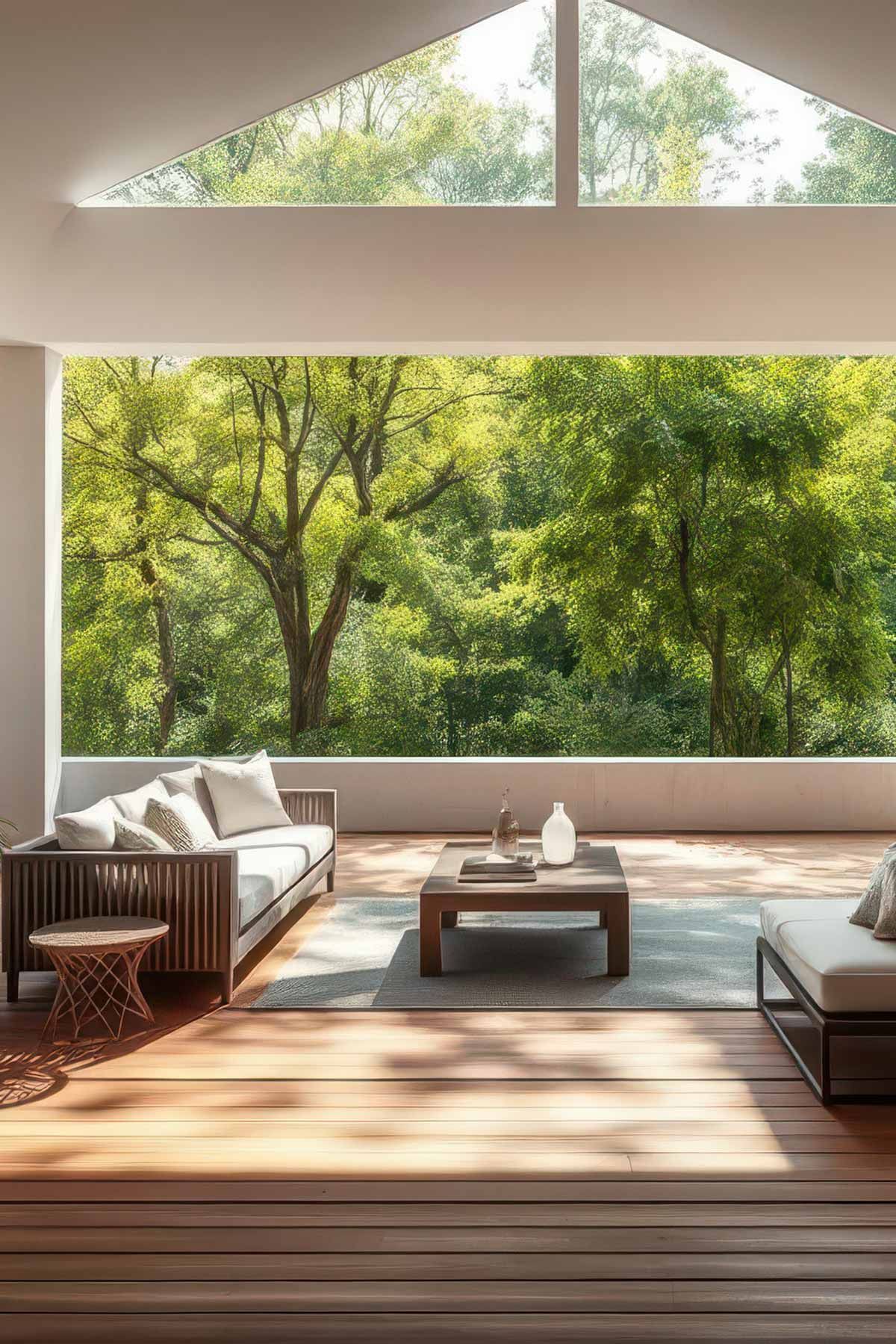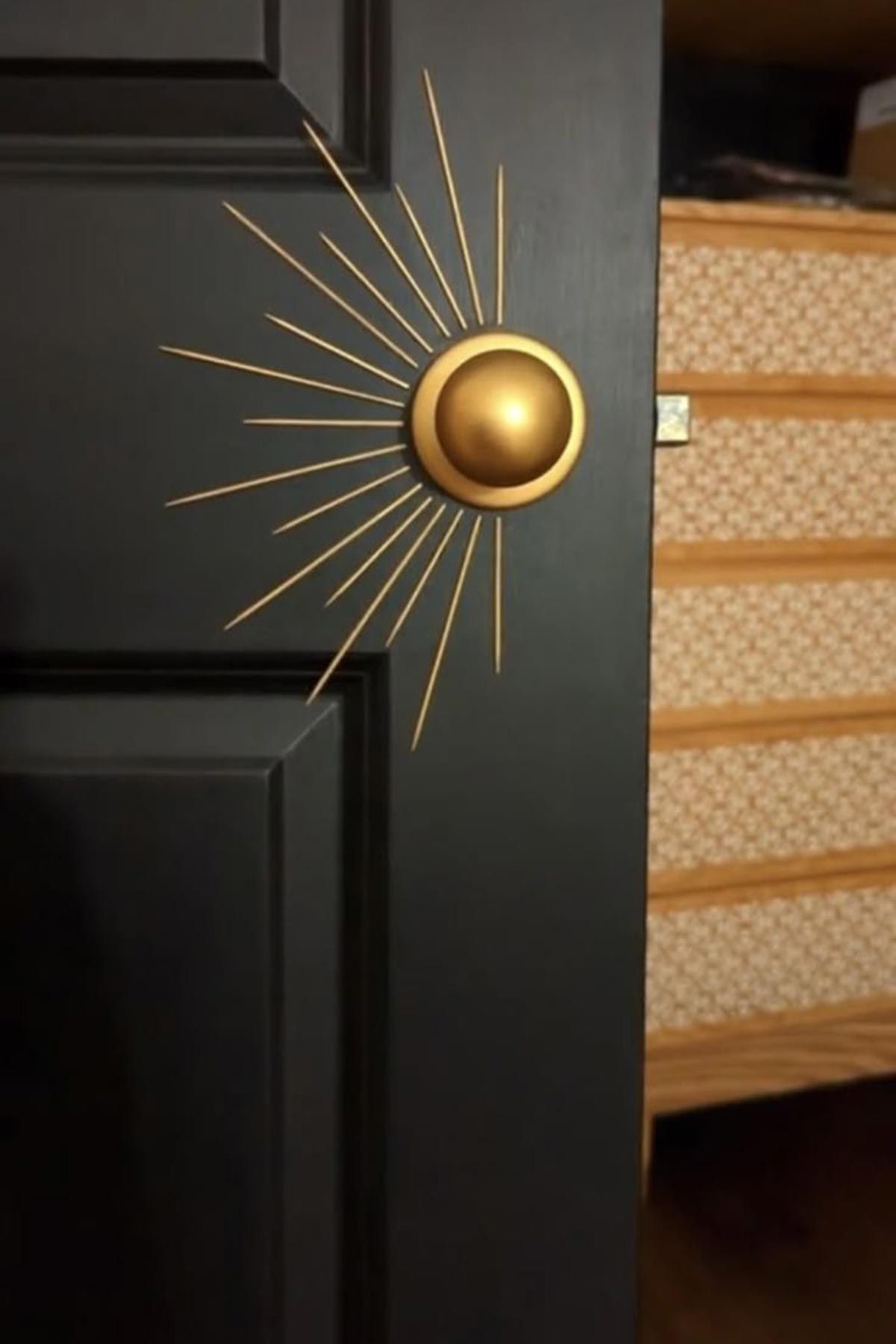Iconic Mid-Century Modern Design Elements to Incorporate in Your Home
Mid Century Design Elements You Should Incorporate In Your Home
There’s something undeniably magnetic about interiors that blend retro charm with everyday practicality. Think of spaces where clean lines meet warm wood tones, or furniture that feels sculptural yet inviting. This aesthetic—rooted in the mid-20th century—still shapes how we create homes today, and for good reason.
I’ve always admired how this style balances simplicity with character. Post-World War II, designers like Charles and Ray Eames reimagined living spaces by focusing on functionality without sacrificing beauty. Their iconic lounge chair—with its moulded plywood curves—is a perfect example. It’s not just furniture; it’s storytelling.
In this guide, we’ll explore 10 foundational features that define this look. From organic-shaped coffee tables to starburst clocks, these pieces bridge past and present effortlessly. You’ll learn how to mix vintage finds with contemporary comforts—like pairing a Noguchi-inspired table with your sleek sofa.
What makes this approach timeless? It’s the marriage of natural materials and uncluttered silhouettes. Large windows, open layouts, and pops of colour (think burnt orange or teal) add life without overwhelming. Ready to bring that balance into your space? Let’s dive in.
Understanding the Mid-Century Modern Legacy
After the turmoil of war, a new vision for living spaces took shape. The mid-20th century wasn’t just about rebuilding—it redefined how we interact with our homes. Post-war optimism and breakthroughs in manufacturing sparked a shift from heavy, ornate décor to sleek, purposeful creations.
Historical Origins and Evolution
This style emerged when architects and makers embraced simplicity. Think of homes flooded with natural light through floor-to-ceiling windows, or chairs shaped like sculptures you could actually sit on. Clean lines and organic curves became symbols of progress, blending handcrafted warmth with industrial materials like steel and glass.
Designer Eleanor Trepte once said,
“It was about stripping away the unnecessary to let form and function speak.”
This philosophy reshaped everything from coffee tables to entire neighbourhoods, proving practicality could coexist with artistry.
Pioneering Designers and Influences
Names like Charles Eames and Isamu Noguchi became synonymous with innovation. Their work—like the iconic Eames Lounge Chair or Noguchi’s fluid coffee tables—turned everyday objects into timeless statements. These creators didn’t just make furniture; they crafted experiences that connected people to their surroundings.
| Era | Materials | Key Features |
|---|---|---|
| Pre-1940s | Solid wood, brass | Ornate details, closed layouts |
| Mid-20th Century | Plywood, fibreglass, aluminium | Open plans, geometric shapes |
| Today | Sustainable composites, recycled metals | Hybrid styles, tech integration |
What’s remarkable is how these ideas still feel fresh. Whether it’s a sunlit living room or a minimalist desk, the legacy lives on—not as a relic, but as a blueprint for thoughtful living.
Signature Characteristics of Modern Design
I’ve always loved how certain homes feel both fresh and familiar—like they’ve cracked a code for timeless appeal. The secret often lies in three core principles that shape every corner: simplicity, contrast, and harmony with the outdoors.
A modern twist on mid-century décor style. Don’t be afraid to use the primary principles of a decor style and then tweak it to your style.
1. Clean Lines and Organic Shapes
Think of a chair that looks like it was carved from a single piece of wood—sleek, uncluttered, yet impossibly inviting. This balance defines the aesthetic. Sharp angles meet soft curves in furniture that serves as art. Take the Eames Lounge Chair: its moulded plywood shell and leather cushions prove functionality doesn’t require compromise.
2. Bold Colours and Material Contrasts
Imagine a teal sofa against walnut panelling, or a fibreglass lamp beside a stone fireplace. These unexpected pairings create energy. I once saw a 1950s sideboard in mustard yellow paired with chrome legs—it transformed an entire room. The trick? Let one element shine while others play supporting roles.
3. The Integration of Nature and Open Spaces
Homes from this era often blur indoor and outdoor living. Floor-to-ceiling windows—like those in the Farnsworth House—flood rooms with light, while open layouts encourage movement. Add a fiddle-leaf fig in a woven planter, and suddenly your lounge breathes with life.

4. Light Timber Furnishings With Smooth Lines
Timber was the material of the day when Mid-Century Modern design launched so many of the items you see are timber. Particularly the lighter timbers and blonde woods helped to keep the rooms fresh and lighter than other darker timbers do. Its not unusual to see the first laminating of timber during this period, so while the structure of the piece should be solid timber, laminated doors aren’t to be avoided at all costs. It was simply the evolution of the time.
5. Bold Colours and Geometric Shapes
From art work to wallpaper, geometric patterns reigned supreme during the height of the modernism era. I remember having this orange and brown geometric wallpaper in my little study nook as a teenager – not realising I loved mid century even then!
6. Large Windows and Glass Walls
While this isn’t always easy to accomplish in a renovation, there is nothing that says mid century like large windows. If you have a wall where you possibly can’t make the window larger, consider using hidden blinds or rolldown blinds instead of curtains to open up the area and make the window feel larger.
7. Open Shelving
The first era to embrace open shelving, this is now super easy to achieve. You can buy kits at places like Bunnings and there are many Youtube tutorials on how to do this yourself. Just be aware that you need to be 100% sure you are securing into a beam that can support the weight of the shelves if you are going completely open.
8. Simple Elegant Handles
This is the era of the starburst clocks and lightly framed unusually shaped mirrors, so it wasn’t a stretch for the door handles and handle surrounds to be unique as well. Some of the starburst patterns are my favourite and I can’t wait to incorporate them into our new space (if and when we finally build it).
9. Definitive Room Dividers
Nothing screams mid-century modern like a room divider. A see through metal room divider is the epitome of mid-century design. Being able to see through the screen meant you kept the open lines of the house, but the screen itself allowed you to break larger rooms into “spaces”. I would love one of these in our home but sadly we have nowhere to put it.

10. Mismatching Furnishings
This is the era that started the mis matched furnishing style. A wonderful leather sofa, paired with tow entirely different style chairs was the order of the day. We can see that style coming through in all décor at present and thankfully matching sofa sets are a thing of the past. This is a swing back to the mid century
Incorporating mid-century modern design elements into Your Space
Creating a home that feels both curated and liveable starts with intentional choices. Let’s talk about weaving retro charm into your daily life—without it feeling like a time capsule.
Hunting for Timeless Treasures
Amanda Thompson, a Melbourne-based stylist, advises: “Look for pieces with clean lines and visible craftsmanship” when looking for mid-century modern design elements . Check drawer joints for dovetail details or legs with tapered silhouettes, something that modern furniture rarely has. Authentic items often show gentle wear—a walnut table’s patina tells its story better than perfection.
I’ve found gems at local markets like Sydney’s Rozelle Collectors Fair. Online, platforms like Chairish specialise in verified vintage finds. Remember: proportions matter. A low-slung sofa pairs beautifully with today’s slim-line consoles.
Mixing Eras Without the Clash
Pair a 1960s teak sideboard with matte-black lighting for contrast. Eleanor Trepte suggests: “Let older items anchor the room, then layer in contemporary textures.” Try placing a bold geometric rug under a minimalist dining set—it adds energy without chaos.
Balance is key. If your vintage coffee table has rich walnut tones, choose modern chairs in lighter oak. I once helped a friend blend her grandmother’s rosewood desk with a sleek white workstation—the result? A home office that bridges decades effortlessly. Mid-century modern design has morphed into a much wider decor style than was first developed.
If you’ve ever been to Palm Springs, the mid century homes there are wonderfully colourful and way brighter than the original design called for. If you get the chance I can’t recommend Modernism Week enough. We went for the entire 2 weeks and loved it. There were so many beautiful houses and homes in varying degrees of modern design.
Don’t shy away from playful pairings. A sputnik chandelier above a neutral sectional creates instant drama. Just keep surfaces clutter-free to let each piece shine.
Contemporary Mid-Century Modern Styling Tips
Balancing vintage charm with today’s needs doesn’t mean living in a museum. It’s about curating a space that feels intentional—where every item serves a purpose while sparking joy. Let’s explore how to refresh this classic aesthetic for modern lifestyles.
Embracing Minimalism and Functionality
Start by editing your room like a gallery. Keep surfaces clear except for 1-2 statement pieces—a sculptural lamp or a teak sideboard. Multifunctional furniture works wonders here. I’ve used a storage ottoman as both seating and a coffee table in small Sydney apartments.
Mix textures to add depth without clutter. Try a jute rug under a polished walnut table, or linen cushions against a leather sofa. As designer Luca Nichetto advises: “Let materials tell the story when forms are simple.”
Maximising Open Floor Plans and Natural Light
Position seating areas near large windows to flood rooms with sunlight. Avoid heavy drapes—opt for sheer fabrics that filter light while maintaining privacy. In Melbourne homes, I’ve seen floating shelves replace bulky cabinets, preserving sightlines.
Use rugs to define zones in open layouts. A geometric-patterned piece under a dining set creates visual separation without walls. Pair with slim-profile chairs to maintain that airy, uncluttered feel.
Remember: this style thrives on balance. A single bold artwork or a trailing monstera plant can energise a neutral palette. Your space should whisper “considered,” not “curated.”
Material Choices and Iconic Furniture of the Era
The soul of a timeless interior lies in its materials and the stories they carry. This philosophy shaped furniture that blended warmth with innovation—think teak sideboards glowing under fibreglass lamps. Let’s explore how material choices and legendary creations defined an era.
Timeless Woods and Innovative Composites
Teak and walnut were stars of the show—durable, rich, and endlessly versatile. I’ve seen Sydney homeowners pair these woods with aluminium legs for a striking contrast. Natural finishes highlighted grain patterns, while new composites like fibreglass allowed curves that wood couldn’t achieve alone.
Designer George Nelson once noted:
“Materials should serve the idea, not dictate it.”
This mindset birthed chairs with moulded plywood seats and steel bases—pieces that felt both organic and futuristic.
Legendary Pieces: The Eames, Noguchi, and More
Charles Eames’ lounge chair remains a blueprint for comfort meeting artistry. Its leather cushions hug a curved plywood shell—proof that functionality thrives in beautiful forms. Then there’s Noguchi’s coffee table: a glass disc floating atop a sculptural wood base. It’s like placing functional poetry in your lounge.
Local markets like Brisbane’s Woolloongabba Antique Centre often feature these icons. Pair them with contemporary textures—say, a wool rug under an Eames replica—to bridge decades effortlessly. The magic? Letting each piece’s materiality shine through simple styling.
Conclusion
Crafting a home that tells your story doesn’t require a time machine. The magic lies in blending ideas that endure—like the warmth of walnut paired with sleek steel, or a lounge chair that feels like art you can curl up in. This style’s legacy thrives because it adapts, inviting you to reinterpret its principles for today’s rhythms .
Whether it’s a sculptural sideboard anchoring your dining room or sheer curtains framing a sunlit reading nook, every choice shapes your narrative. I’ve seen Sydney apartments transformed by a single teak credenza, and Melbourne homes energised with bold geometric rugs. The key? Let your space evolve as you do—mixing eras, textures, and stories.
Thank you for exploring these ideas with me. Now it’s your turn: hunt for that perfect chair, play with open layouts, or let natural materials sing. Remember, great interiors aren’t about perfection—they’re about creating rooms that feel authentically yours . Go on—your next design adventure awaits.
Don’t forget how much impact the little things can make. Door handles, kitchen fittings and even your rugs will help to create a mid-century styled home you will love.

FAQ
What defines mid-century modern style beyond clean lines?
Beyond sleek silhouettes, this aesthetic embraces organic shapes , functional furniture , and a mix of natural and industrial materials like teak, plywood, and molded plastic. Think of Eames chairs or Noguchi tables – pieces that balance artistry with everyday use.
How can I mix vintage and contemporary pieces without clashing?
Focus on shared principles like simplicity and geometric forms . Pair a vintage Saarinen tulip table with minimalist acrylic chairs, or add a bold Jonathan Adler lamp to a room with a George Nelson bench. Stick to a cohesive colour palette to tie eras together.
Are bold colours typical in mid-century modern interiors?
Absolutely! While warm wood tones dominate, accents in mustard yellow, burnt orange, or avocado green (think Herman Miller fabrics) were hallmarks. Use these hues in textiles, abstract art, or statement lighting to channel the era’s playful energy.
Why are materials like teak and plywood so prevalent in these designs?
Post-war innovation led designers like Charles and Ray Eames to experiment with durable, affordable materials . Teak’s rich grain suited organic shapes, while molded plywood allowed for curved, mass-produced chairs. These choices reflected both practicality and aesthetic rebellion against ornate predecessors.
Which iconic chairs best embody the mid-century modern movement?
The Eames Lounge Chair (1956) remains the gold standard – its leather-and-plywood combo screams luxury meets innovation. Other legends include Arne Jacobsen’s Egg Chair, Hans Wegner’s Wishbone Chair, and Harry Bertoia’s wire Diamond Chair – all still in production today.
How does nature influence mid-century modern spatial layouts?
Architects like Joseph Eichler prioritised open floor plans and walls of glass to blur indoor/outdoor boundaries. This “bringing the outside in” philosophy extended to stone fireplaces, living-edge wood slabs, and atrium-style courtyards in homes.
Can I achieve this look in a small urban apartment?
Definitely! Opt for multi-functional pieces like a Florence Knoll sofa bed or a Noguchi coffee table with hidden storage. Use vertical space with George Nelson bubble lamps and lean into mirrors to amplify light – a key element of the style’s airy feel.
Some Other Mid Century Articles You Might Like

About The Author
I'm Channing and I am the driving force behind Platypus and Pine. I've had over 30 years of experience in designing, renovating and customising Australian homes.
I've used everything from aluminium to velvet as decor choices and love a wide variety of styles and themes.
My absolute favourite is Mid Century Modern and I was fortunate enough to spend 2 weeks in Palm Springs for Modernism week just last year.
